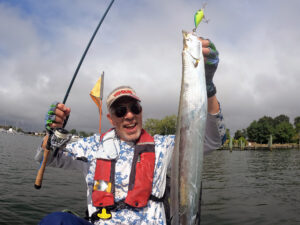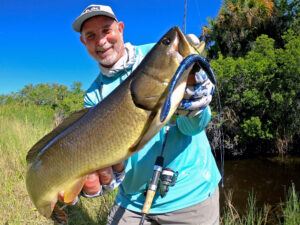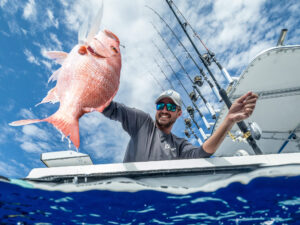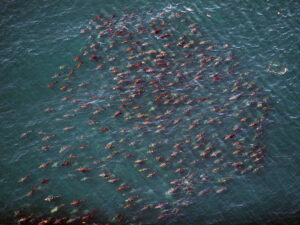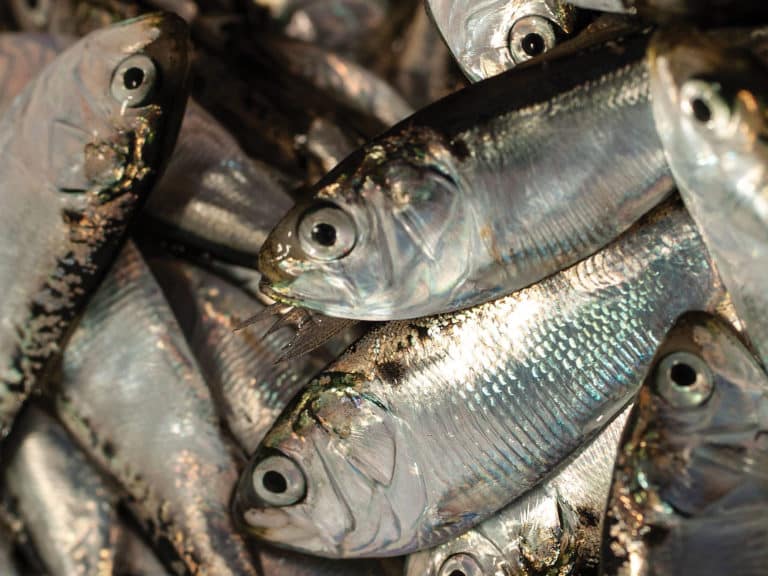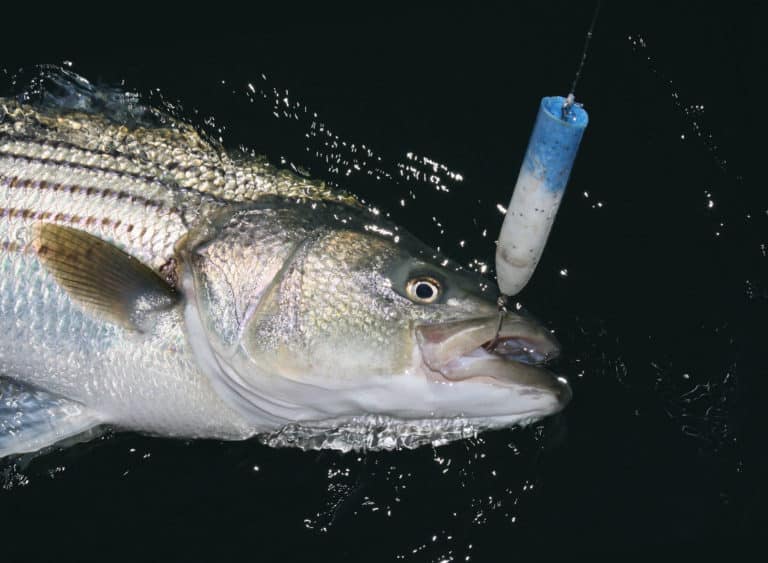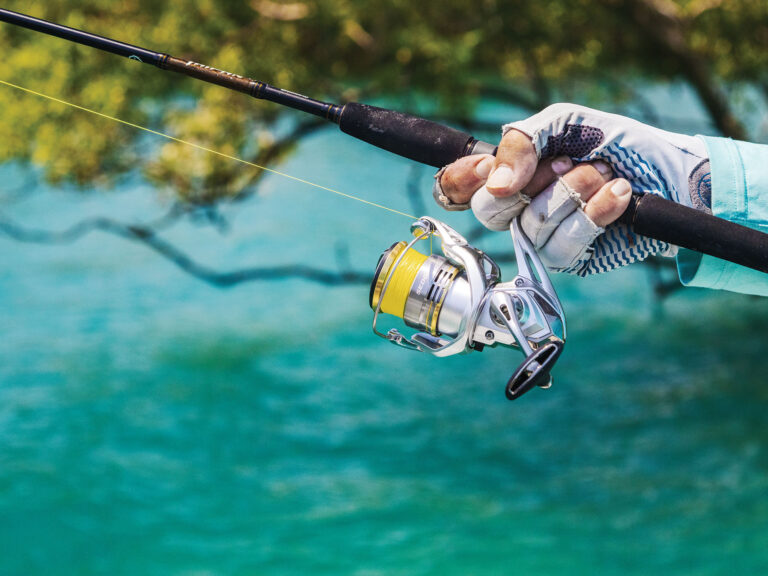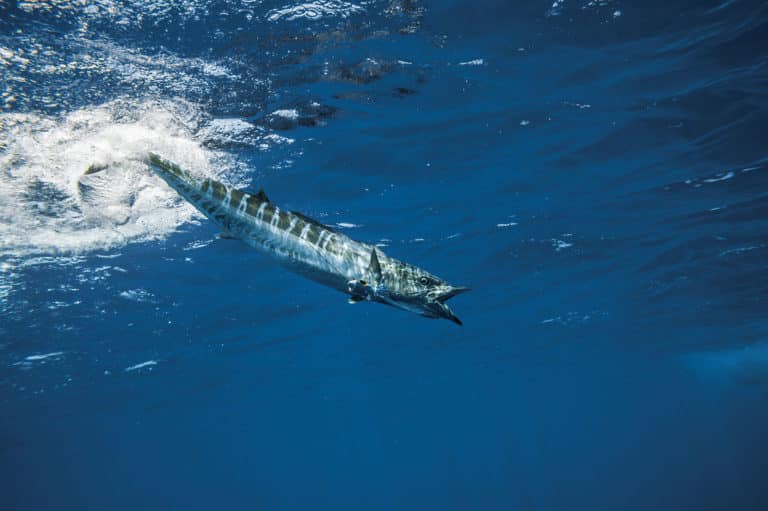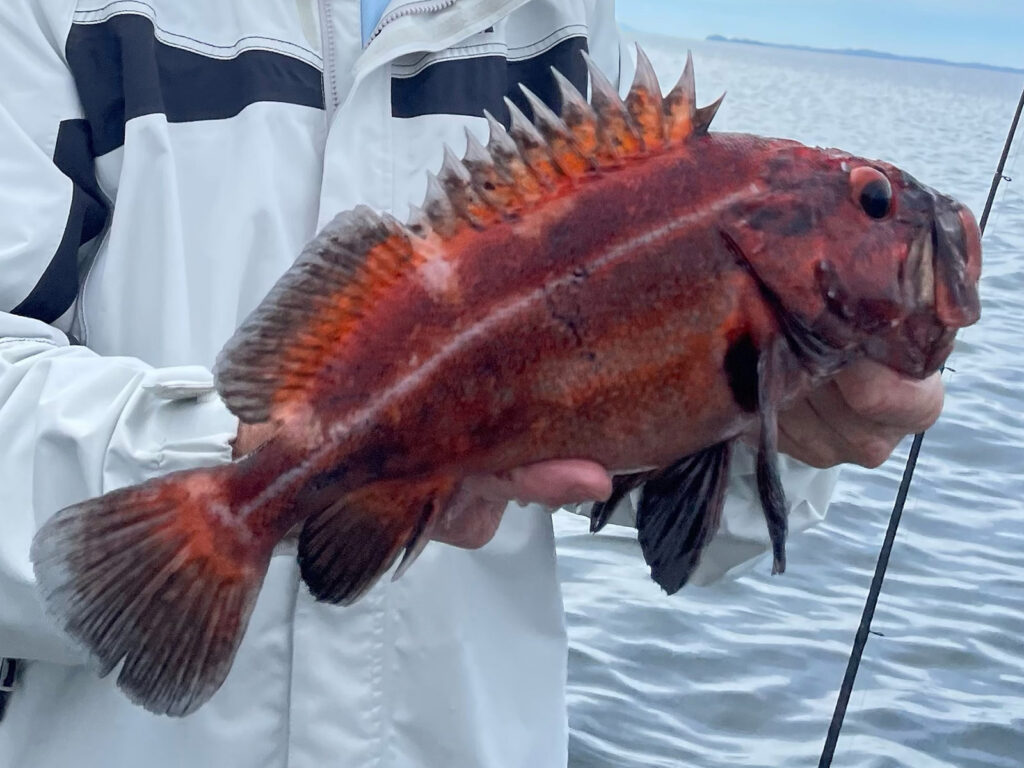
Do you have a photograph of a fish you can’t identify? If so, we’re up for the challenge, and would welcome the opportunity to share your photo and its ID with an international audience of enthusiasts. (Whether published or not, we will personally respond to every inquiry.) Email your jpgs, as large/hi-res as possible, to: fishfacts@sportfishingmag.com.
The Pacific Northwest is home to literally dozens of species of rockfishes (genus Sebastes; in no way related to striped bass of the Atlantic locally known as “rockfish”). Identification can be tough. Color is the most common indicator, but it’s not always reliable, and anglers are often left scratching their heads as to what species they’ve caught.
So it was when angler Chris Bushman in Ketchikan, Alaska, jigged up this rockfish from about 130 feet of water recently. Even the guide was unsure of the species’ identity. “All of the other area guides were perplexed as well,” Bushman writes. “It would be nice to know exactly what I caught and released.”
In fact, Chris, that’s a yelloweye rockfish, Sebastes ruberrimus. If guides were uncertain, that’s understandable, since yelloweye (widely in Alaska waters referred to as “red snapper”) are generally a brilliant orange-red as adults. But juveniles — and yours appears to be a juvie — are a darker red with two bright white stripes down each side. This fish has a thin stripe but not nearly as wide and prominent as usual. And yours has a great deal of black pigment all over, which is unusual. Fish Facts checked with our northern Pacific expert, Dr. Milton Love, who confirmed this coloration is rare, though in one area it occurs with some regularity.
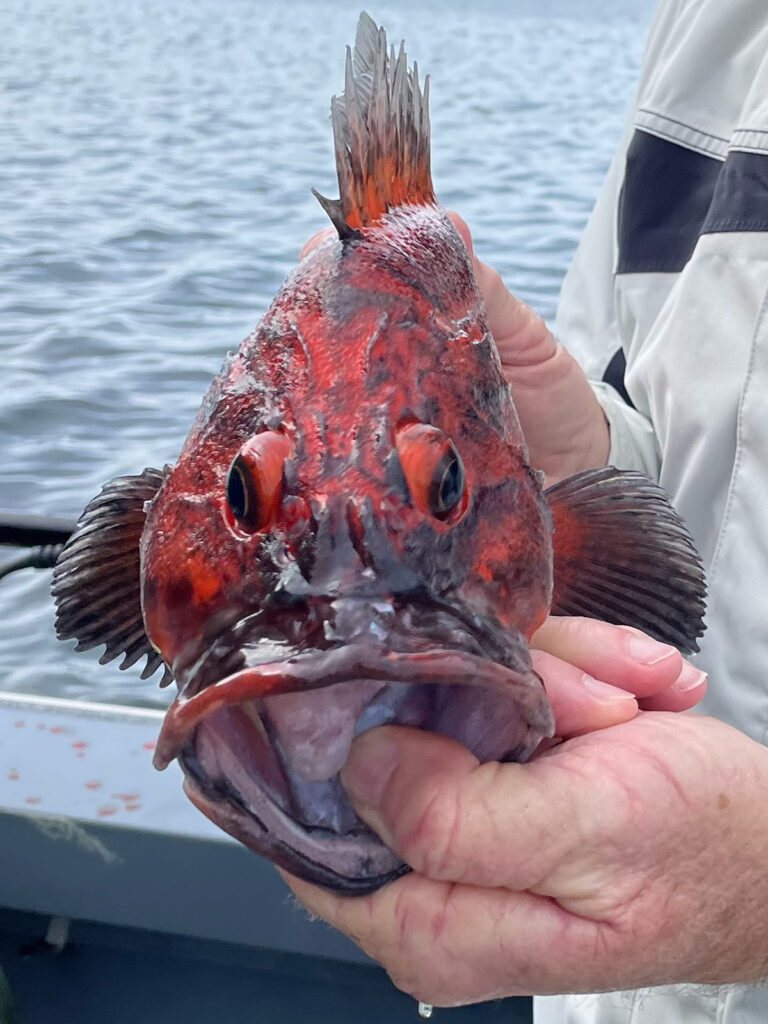
A bit of intel on the species: Yelloweye (Alaska to California) are very long-lived and slow-growing. NOAA lists them as living up to 150 years. They’re very territorial, often spending their adult lives in one rocky area (usually in 200 to at least 1,200 feet of water). That and their slow growth make them exceptionally vulnerable to overfishing. As a result, it is illegal to possess or fish for (once abundant) yelloweye off California, Oregon and areas of Alaska.
Unfortunately the release of these deepwater, pressure-sensitive fish is challenging, though it’s doable with a good descending device. As you might guess, yelloweye is superb eating. It’s been long coveted for that quality and for the brilliant red color, distinguishing it from other game fish of Northwest waters.

